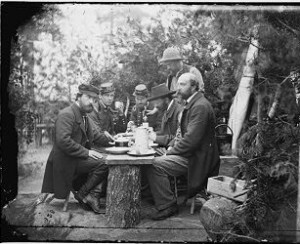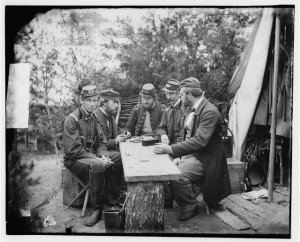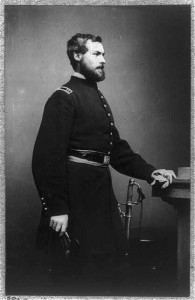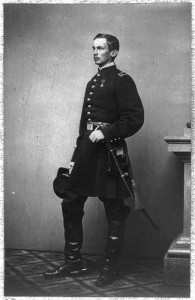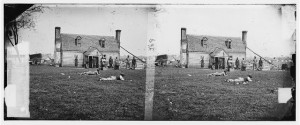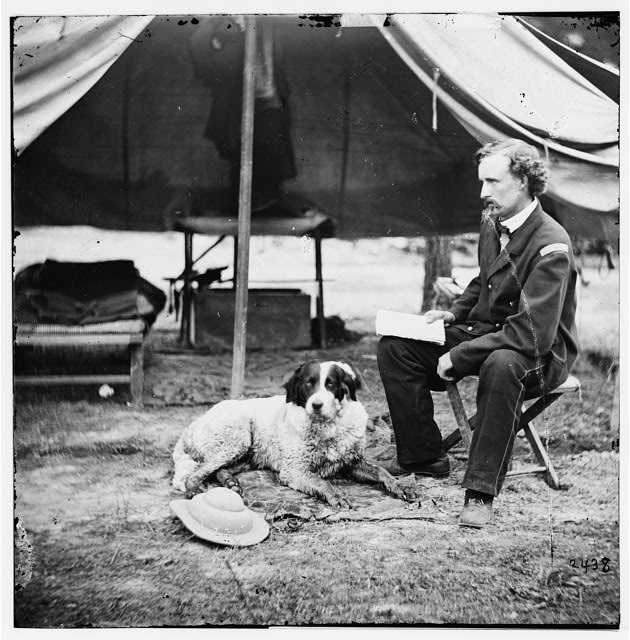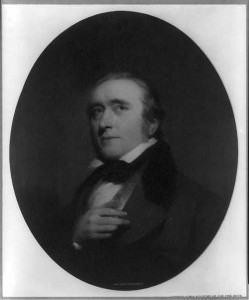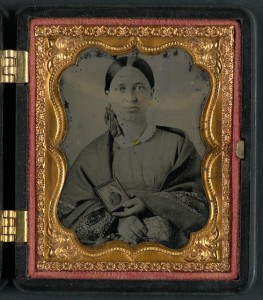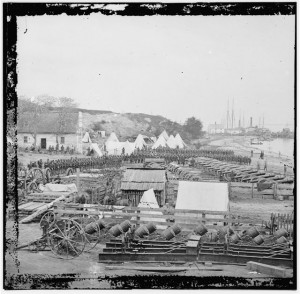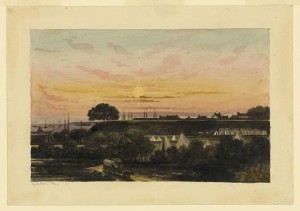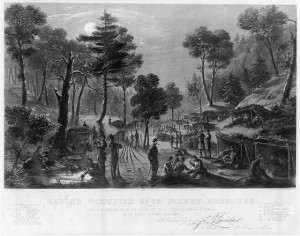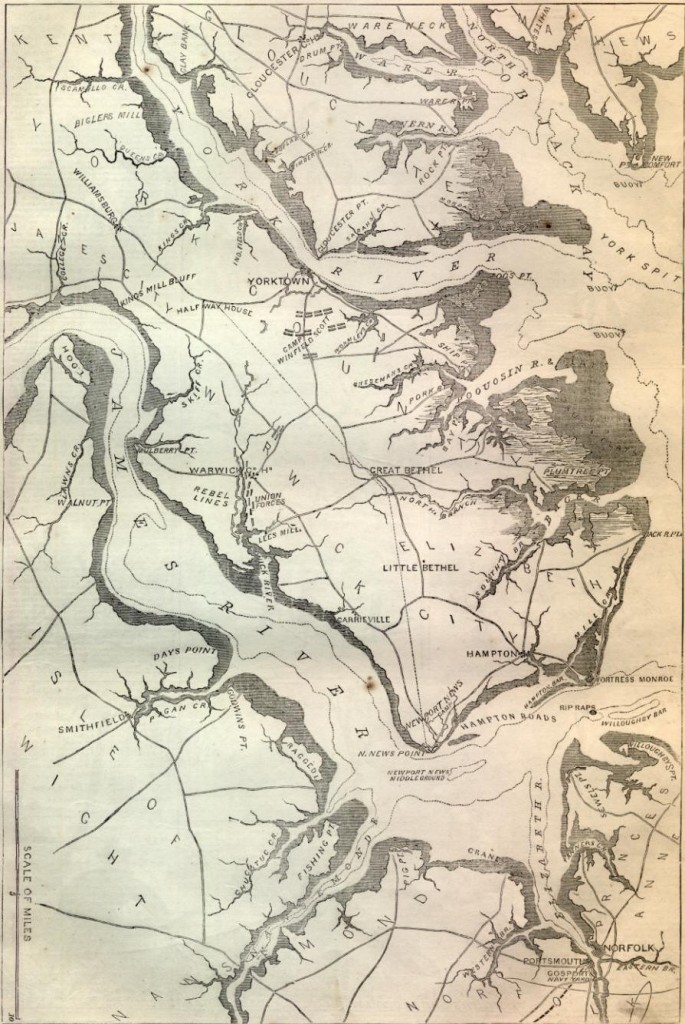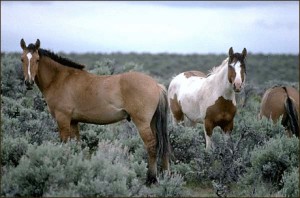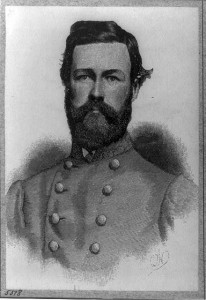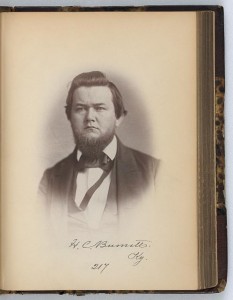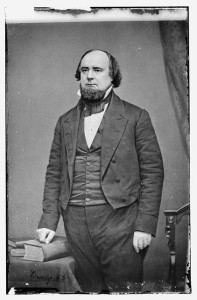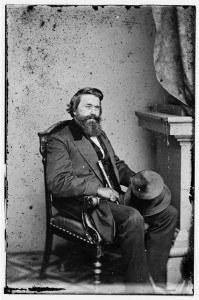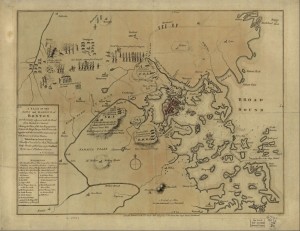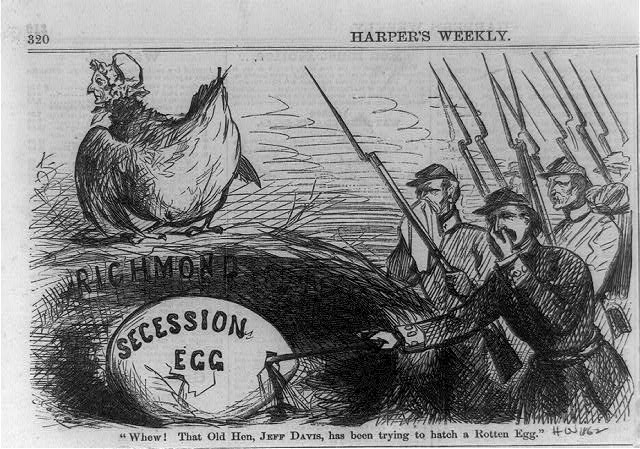
Boat ride preferable to muddy march through Virginia
Here’s another letter from a member of the 33rd New York Volunteer Infantry. 150 years ago this week the 33rd was taking part in the Union siege of Yorktown. This is quite a long letter that begins with a recap of the regiment’s movements from mid-March when the Army of the Potomac advanced to find that the Confederates had retreated from the Manassas vicinity.
From a Seneca County, New York newspaper in 1862:
The March of the Thirty Third
Camp on James River; Advance toward Richmond: Engagement near Fort Hunter; Skirmish at Lee’s Mills; Negro regiments, &c, &c.
IN FRONT OF THE ENEMY’S LINES.
April, 24, 1862.
Having from various reasons known only to “Uncle Sam” been unable to give you any account of the doings of the 33d for the month past and thinking that some of our friends would like to know what we have been at during that period and how we have earned our Thirteen Dollars per month and rations of Pork and hard bread, I copy a few extracts from my Journal, as a sort of preface to the communications I am once more allowed to send you.
“March 14th 1862. – Our whole Division left Camp Griffin at daylight and took up the line of march for the rebel stronghold Manassas. Passed through Lewinsville and Vienna, both very insignificant places of ten or a dozen houses each, and toward evening encamped before Fairfax Court House. Here we heard of the evacuation of Centerville and Manassas and as the object of our advance was thus accomplished we went no further.
March 15th. – Ordered to Alexandria, – marched fifteen miles in a terrible storm, with the mud six inches deep. Encamped in the woods.
March 23d. – Marched to Alexandria, and embarked on a fleet of transports waiting to carry us to our destination. The voyage down the Potomac river and Chesapeake Bay was delightful and much enjoyed by the boys who unanimously voted it far preferable to to marching through Virginia mud.
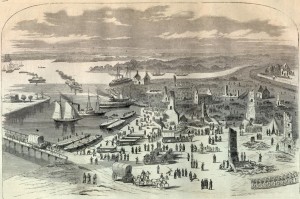
The 33rd marched through Hampton
March 26th. – Landed at Fortress Monroe early this morning. Marched through Hampton and encamped upon a beautiful plain near the James River.
Hampton, formerly a very fine town and built entirely of brick, was destroyed by fire last fall to prevent our troops enjoying it as winter quarters. The walls of many of the buildings are yet standing, among them I noticed many lofty columns, heavy arches and other evidences of former grandeur, also the walls of an old church built of various colored brick brought from England, many a year ago.
March 27th. – Left camp this morning, marched all day, and drove the enemy’s Pickets and scouting parties to Bethel. – Bivouaced in the woods.
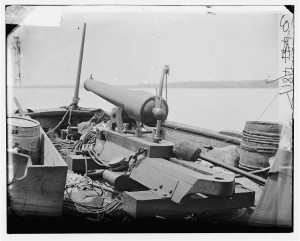
Aboard the Teazer after its 7-4-1862 capture
On the next day we returned a few miles and encamped on the bank of the James River, three miles from Newport News. – For a few days the boys enjoyed themselves hugely digging for oysters, clams and bathing in the waters of the James river, which is a noble stream, seven miles wide at this point. On the opposite shore frown the long lines of Rebel batteries, and occasionally the “Rebels” send over a gunboat very appropriately named the Teazer, to throw a few shells into our camp, and reminds us that we are away down south in Dixie. On one of these excursions she surprised thirty or forty of the boys bathing in the river, and dropping a couple of shells among them caused them to beat a hasty retreat into camp. Such “time” I never saw made before. On, on they came as if the “old nick” was after them, without hats, without coats, without shoes, and some of them without anything.

'On to Richmond, McClellan leads'
This part of Virginia, lying between the James and York rivers is known as the Peninsula, and varies from three to fourteen miles in width for a long distance up. Many little creeks and inlets, set in from either side and some of them reach almost across making it very difficult, to march a large army up the Peninsula, but “nothing is impossible to him that wills,” and GEN. MCCLELLAN, having transported his grand Army hither, arrived in person on the 2d of April and on the 4th the whole army was in motion.
“On to Richmond, McClellan leads” was now the exciting cry, and amid the music of a thousand bands, and the shouting and singing of the soldiery, the long lines went gleaming forth and thousands of bright bayonets flashed in the rising sun. On rolled the artillery and the heavy columns of Infantry and following them came the long lines of trains of ammunition and Baggage wagons, and soon the whole grand Army, with McClellan at its head, in accordance with his plans laid long before in Washington, sweeping the Peninsula from river to river, was on the march to Richmond.
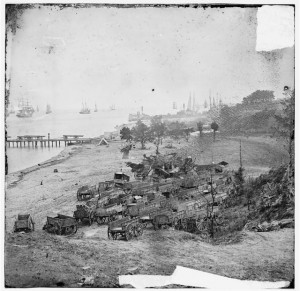
An army marches with its wagons
Our Division led the column on the left, on James river road, and after marching about eight miles arrived at a strongly intrenched rebel camp, on Deep Creek at a place called Young’s Mill’s. The 3d. Brigade led, and the 33d. Regiment forming in line of Battle, with the 7th Maine thrown out as skirmishers, at once advanced upon the fortifications of the enemy. But the “Rebels” had gone, and left only a rear guard in the camp who retired after a single volley. – Remaining here until morning we again advanced in the same order, the 7th, deployed as skirmishers and the 33d. marching through dense woods and wading through many a creek and swamps in line of battle, expecting every moment to meet the foe, and about eleven o’clock, we met them and in good earnest too. Just as we were emerging from a swamp, ar [?] morass about two miles across, we came upon the enemy strongly fortified upon the bank of the Warwick River, a narrow but deep stream, running nearly across the Peninsula and emptying into the James River. As soon as the enemy discovered us the artillery opened on us on both sides, and the round shot and shells came crashing through the trees around us in every direction. To the 33d. was given the dangerous task, of supporting the Batteries, and nobly our men performed their duty. Not a man flinched but but all steadily kept their posts during the entire day, and when the enemy attempted to out flank us on the left and COL. TAYLOR, led his men across the open field amid a storm of shot and shell, to meet the advancing foe, not a man faltered and the ranks were as steady as if we were upon dress parade. – The rebels were driven back and at sunset the firing ceased. We rested upon our arms and before morning were thrown forward in front of the Batteries to meet the enemie’s riflemen who were deployed in front of their lines; at daylight the ball was reopened. All day long we kept at it, and so near were the skirmishers to each other that a lively conversation was carried on between us. We ascertained that the 10th, Georgia was confronting us and that the fort in our front was called Fort Hunter, after R.M.T. Hunter, formerly U.S., Senate, from Virginia. Many a joke was cracked on either side, as we cracked our rifles at each other, but the “unkindest cut of all” was when one of our boys in answer to one of ‘drives,’ inquired the price of salt among them. (You know they haven’t any, and what is worse can’t get any.)
On Monday Gen. McClellan having reconnoitered the position of the enemy and ob- [missing data] dered our forces to retire about two miles, and the famous reconnoisence on Fort Hunter, and the enemy’s lines to Yorktown was over.
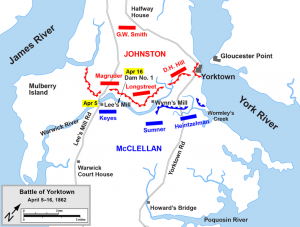
33d. was on the Union left in Keyes' corps
Since then we have been gradually moving to the right, skirmishing with the enemy nearly every day, and we are about thirty miles from Fortress Monroe. Every day we are at work. First on Picket, then throwing up fortifications. One day building corduroy roads over this Virginia mud, the next supporting a battery, or out skirmishing with the enemy. Sometime we can sleep in our tents, but more commonly we lie on the ground in the open air, and often in a drenching rain, with our arms in our hands ready for a brush with the foe. Our lines are now only separated by the Warwick river and every few days we have a dash at the enemy or they make a rush upon us, while the artillery keeps up a continual storm. – Day before yesterday, the Rebels crossed and attacked our pickets, but they were soon driven back, with severe loss. The sharpest skirmish we have had since the fight in front of Fort Hunter, took place on the 16th. inst when after moving some distance to the right we made a reconnoisance in force along on front and extended our lines down to the river at Lee’s Mills, The Rebels made a strong resistance but our troops drove them back, at the point of the bayonet, and not satisfied with this, three companies of Vermont boys charged over the river into one of their forts, when they were met by a whole Brigade of Rebels and two regiments of Niggers, the black scoundrels were armed with shot guns, axes, scythes, and all sorts of weapons, and literally mowed our boys down as they rushed upon the the breastworks: of course so small a force was obliged to retire to this side of the creek but as the Black and White Rebels swarmed out after them, they were met by thirty-two rounds of grape and cannister from our artillery, and the slaughter was terrible. But all these skirmishes are are but the first faint mutterings of the awful storm that is so soon to burst all along these lines. The Rebels are concentrating all their troops at this point, and working day and night upon their fortifications. Their force is variously estimated form Eighty to One Hundred and thirty thousand men. This is evidently their last stand, and here they will make a most desperate struggle. Upon our side everything is progressing finely. I would not give you any particulars, but it should satisfy every loyal citizen in town to know that our noble Commander, Gen. McClellan, directs everything in person, and when he gives the command for us to advance upon the foe, we shall rush to the charge confident of Victory.
Ever yours
G.
More evidence that General McClellan had the confidence of his troops.
There’s debate about whether there were black Confederate soldiers during the American Civil War. G.’s story here about the black soldiers during the Battle of Lee’s Mill would seem to be at best hearsay. Maybe the black men were slaves being made to help fortify the works and were defending themselves when the Vermonters attacked.
G.’s anecdote about the Teazer shelling the Union bathers out of the James is backed up in The story of the Thirty-third N.Y.S. vols.; or, two years campaigning in Virginia and Maryland by David W. Judd, pages 74-75.

The images of Alexandria, Hampton, and the old map were all published in the April 19, 1862 issue of Harper’s Weekly.
Hal Jespersen’s map of the Battle of Yorktown is licensed by Creative Commons.

